Art and Immaterial Labour: Metamorphoses
An attempt to to situate historically the concept of plastic and figurative art in relation to the development and structure of modes of production.
To begin with, let us try, from a materialist standpoint, to situate historically the concept of plastic and figurative art in other words, the definition of its historically determinate link, if there is one, to the development and structure of modes of production. Can this be done? Obviously, once we're obliged to speak of art and immaterial labour, this is a useful thing to do; in fact, its immaterial character does not strip labour not even in its relationship to artistic production of its historical centrality, and does not drain labouring activity of that economic energy and ontological power which must indeed exist in order for labour to be exploited under capitalism. So is such a definition possible? I think so. In fact (notwithstanding the superficiality and flimsiness of art markets that is, of artistic phenomena tied to the circulation of capital), we can outline a somewhat crude but nevertheless effective correspondence between the different epochs of artistic activity (styles and poetics), on the one hand, and the forms of capitalist production and organization of labour, on the other. In what follows, I would like to sketch out the figures taken by this relation.
Let us go back, then, to the period that witnessed the increasing centrality of working-class struggle to capitalist development. From 1848 to 1870, this centrality expresses itself with vigour in the massive growth and concentration of working-class labour in all its materiality. Does the realism of artistic expression (between Courbet and Cézanne, for instance) display this new historical condition of work? I think it is possible to answer affirmatively if we consider the force with which the denaturalization of the real and the structural materiality of the subject begin to appear in this realism, precisely in correspondence with the first great episodes of industrial and metropolitan centralization in the exploitation of labour-power.
The period of impressionism, between 1871 and 1914, corresponds instead to policies on the side of the bosses that deepen the division of labour and its specialization policies to which there corresponds, on the workers side, a subversive project aiming at the self-management of production. We witness a first great episode in the emancipatory overdetermination by the professional worker of the conditions for the accumulation of capitalist production. Labour becomes aware of the fact that its enemy, the capitalist world, may be dissolved and possibly reconstructed if one grasps (that is, if one reappropriates) the key to production: labour itself, within the mode of production. It is in labour that the world is dissolved and reconstructed and possibly the artworld too. This is the slogan of this first phase of artistic transformation in the history of the present: creation consists in dissolution.
Then comes the October Revolution. As the tsunami of revolutionary thought and subversive action spreads around the world; as capital, in order to respond to the challenge, finds itself obliged to enforce further proletarian growth and concentration in the productive base, to establish new norms of worker consumption (welfare), to push abstraction to the highest level, and to introduce scientific management into the organization of labour well, it is then that, in the aesthetic field too, the abstract form of artistic production prevails. This abstraction is at one and the same time the representation of the abstraction of labour and from the workers standpoint the material for an alternative imagination. What, in fact, is socialism if not the project autonomously to organize the abstraction of labour?
From 1917 to 1929, from the storming of the Winter Palace to the Great Crisis, this is an expressionist abstraction, in the sense that it heroically defies the real and current determinations of exploitation while violently anticipating, aggressively advancing and seeking to overturn its degree of abstraction. This abstraction traverses the figurative, destroys and reconstructs it, experiencing revolutionary passion and the desire for a constructive aesthetics in epic excess.
Then, having been led back to the market and the circulation of commodities, abstraction takes ever more analytical forms forms that remain abstract, but are precisely analytical, multifarious, sometimes ephemeral, often open to experimentation and to each of the innovations that the crisis (and the ensuing renewal of the capitalist mode of production) makes possible, and which the development of proletarian struggle demands. After 1929, the only artistic production is the one expressed by the mass-artist, embodied in his constructive capacity, as though artistic production constituted the form of this capacity. And this is the story which, amid constant experimentation, leads us all the way to 68. This is the period in which abstraction and production are intertwined: the abstraction of the current mode of production and the representation of possible worlds; the abstraction of the image and the use of the most varied materials; the simplification of the artistic gesture and the geometric destructuring of the real, and so on and so forth. Picasso and Klee, Duchamp and Malevich, Beuys and Fontana, Rauschenberg and Christo: we recognize in them artists sharing the same creative experience. A new subject and an abstract object: a subject capable of demystifying the fetishized destiny imposed by capital.
And then? What can we draw from this? 68 comes and we reach a moment when contemporary art confronts new questions. How does the event arise? How can passion and the desire for transformation develop here and now? How is the revolution configured? How can man be remade? How can the abstract become subject? What world does man desire and how does he desire it? What are the forms of life taken by this extreme gesture of transformation?
Lets sum up. First, we have the phase of re-appropriation and self-management (1848-1914), dominated by the development of the professional worker, his struggles, his utopia and his revolution. Following the Paris Commune, this phase splits, in what concerns artistic trends, into the two directions of realism and impressionism. Then comes the revolutionary phase beginning in 1917 and ending in 1968, all of it internal to the abstraction of labour-power, which in turn divides after 1929 into expressionism and abstract experimentation; this is a period during which the mass worker comes forward as the hegemonic subject over/against the abstraction of labour and undertakes the project of its socialist management. We then arrive at a new period the constitutive period of the social worker and cognitive labour-power. But constitutive of what, when, where?
Immaterial?
It is worth asking ourselves right away if the phrase immaterial labour is apposite. Today, paradoxically, saying immateriality no longer means saying abstraction, but rather concreteness; no longer vision and spirituality, but rather immersion into bodies, expression of the flesh. Immaterial labour constructs material products, commodities and communication. It is socially organized through (very material) linguistic, electronic and cooperative networks and through multitudinous movements and associations. This is a fleshy immateriality, that is to say a mobile and flexible materiality, an ensemble of bodies. Here, then, (from the artistic standpoint) is the final paradox of this story: artistic development transforms the abstraction of the social relations in which we are immersed into corporeal figures, releasing the vitality of the flesh into images that move and inflect themselves, in a process of continuous transformation. From Bacon through Warhol to Nam June Paik, the artist imagines a thick space, a molten turmoil, and looks fearlessly to a world freed from its internal architecture. Artistic development now takes place not so much in immaterial as in biopolitical terms. The attempt to traverse social communication, to catch one of its figures on the wing, is accompanied by an immersion into the chaotic and productive tumult of forms of life. Today’s artistic paradox consists, intensively as well as extensively, in wanting to produce the world (as well as bodies and movements) otherwise, from within a world that refuses to recognize any worlds other than the existing one, and in knowing that this outside to be constructed must be the other of an absolute inside.
Obviously, what I’ve said up to now does not intend to be a new narration of the history of art. It suffices for us to establish the fact that artistic activity always takes place within the (existent) mode of production and reproduces it that is, it either produces or challenges it, endures or destroys it. Artistic activity is a mode, a singular form of labour-power. Not by chance, every product of artistic activity can thus become a commodity, just as, conversely, the selfsame product can be elevated by presenting itself as an invention or in any case as a sui generis production and an irreducible singularity. Like every object of production in the era of capital the artwork is two things: a commodity and an activity. It is on the basis of this twofold character of productive activity that we can grasp what I would like to identify here as the internal reality of the artistic relationship, current and/or contemporary: not only, therefore, that mode of producing art which comes under the production of commodities, but that mode of producing art which is nothing other than the figure, the power of being creative in the world. Labour-power as a free bird in the forest of life.
In this regard artistic labour gains the ontological relevance possessed by all forms of labour in their creative facet. This is all the more so to the extent that artistic labour, through the very evolution of modes of production, becomes indistinguishable from cognitive labour. Artistic labour takes on the characteristics of cognitive labour: leading the production of commodities back to the circulation of commodities, the linguistic analysis of reproduction, virtual valorization, networks and cooperation, and so on and so forth. This ontological relevance has long been emphasized in studies on art. Particularly important in my view is the contribution of the Vienna School, at the end of the nineteenth and beginning of the twentieth century, when, analysing along with Alois Riegl late Roman and/or Byzantine artistic industry, its authors delineated the set of forces and social models involved in artistic doing, and were thus able to grasp its ontological overdetermination: Kunstwollen; that is the singular will of art-making, the turning of every technique back on the one who uses it, as well as the blurring through production of subject and object in the historical process. In other words, we are dealing with an overdetermination of labour: Kunstwollen animates industry and industry breathes in Kunstwollen. Now, in every one of the eras weve mentioned what was experienced in the late-romantic period lives again. It is also worth underlining that the Kunstwollen is, on the one hand, of comprehensive significance for the era it describes and, on the other, singular in terms of the form through which it combines materials, the modes of production it employs, and the needs and tastes it mobilizes. Kunstwollen is an intentionality which in its realization does not lose its spatio-temporal impact, but instead renews it. It develops it, here and now, in a cognitive manner, showing work to be the formative form of the living. The technical medium is spiritual, and vice versa. Lets take two more references from the history of art criticism, from the works of Wilhelm Dilthey and Michel Foucault, respectively. The uses of this discussion will become clear as we proceed. Now, in Dilthey the relationship between the mode of production and artistic experience initially seems to be articulated in a very different manner from the Vienna School: the artwork is the product of an individual Erlebnis and artistic experience has strong psychological connotations. Little by little, however, Diltheys aesthetics or, better, his analyses of the singular poetics of romantic and post-romantic authors develops the concepts of historical structure, expressive technique and the singularity of artistic perception, concepts which issue into a vision that is very close to that of the Vienna School. But Dilthey goes further: in artistic production, the exchange between the agent and what is acted upon becomes ever deeper and serves as the motor behind the ontological transformation of agents.
As for Foucault, he offers the episteme as the linchpin of the interpretation of an era, but at the same time he exposes the development of the era itself to the edge of innovation and the rhythm of discontinuity. He insists especially on the hybridization and interface processes within which the transformations of the episteme take place. To the question, What is an author?, Foucault already replied in 1969: qui importe qui parle! (who cares whos speaking!). In 1971, with reference to Manet, Foucault sets down the forms taken by the metamorphosis of the artistic gesture: Manet tableau-objet the fundamental precondition in order one day to be freed from representation itself and to allow for the play of space with its pure and simple properties, its own material properties.
Why, then, are these authors, Dilthey and Foucault who represent a before and after vis-à-vis the shift that introduces us to postmodernity and the hegemony of immaterial labour over the artistic scene so important? Because here ontology and history are intimately tied together. The biopolitical is announced at this crossroads.
Biopolitical labour
Lets return to where we began this reflection; that is, at the point where we stopped tracking the course of art history, around 1968, in terms of that turn which we identified in the end of the era of the mass-worker. Lets now enter the new phase that opens up here. Dominated as they are by globalization and the saturation of the experience of life under capitalism, both art and labour, as we saw, have become abstract; nevertheless, subject and object refer back to one another in the play of production, where every outside has vanished. But how can we identify the emergence of the beautiful in the passage from modern to postmodern? How can the will to make art allow us to traverse its abstraction? In order to reopen the discussion we will need to underline that a mutation has already taken place, perhaps even an anthropological metamorphosis. In this existence of ours, creating has likely lost all links to any kind of nature, and leaving all preconceptions aside it is no longer even a sublimation: rather, it is something beyond measure, an excess that discovers forms for a surplus of productivity. When labour-power is cognitive, the desire for artistic expression is to be found everywhere; when the mass of workers is transformed into a multitude of singular producers, artistic activity affects the forms of life and these forms become the flesh of the world.
Bernard Stiegler, following in the footsteps of Leroi- Gourhan and Simondon, has depicted this shift very effectively. He captures the tendency towards a unification of anthropogenesis and technogenesis, as the world exposes itself to a veritable machinic turn. Cognitive labour produces objects that modify the subject. No longer in metaphysical (Heideggerian) terms but in critical (Kantian) ones, cognitive labour illuminates or unveils through technology that secret of truth which subjects produce through constant interrelation. Depth is discovered when it is introduced into the circle of inside and outside, constitutive and constituted. Ultimately, the Kantian schematism the definitive impasse of modern philosophy around which the death of man ferments and is eventually recognized does not issue into the sublime but rather into the circle of constitution. It is played out between the subject and the technical object, and the latter also posits itself as subject. Following Stiegler, human becoming, through mans prostheses, constitutes the ultimate fate outlined by cognitive labour. Metamorphosis is a figure for the ontological relevance of artistic action.
But we need to introduce a further element. We have begun to perceive the efficacy of immateriality and cognitive labour with regard to art. We identified this shift in the postmodern turn, and in its unification of anthropogenesis and technogenesis. But (for a number of reasons which we won’t go into here) today the situation has been stabilized. We are no longer moving towards the postmodern, or rather, we have already moved beyond every post-. We exist in contemporaneity and this contemporaneity has further intensified the transformation of labour. From being immaterial, cognitive, affective, it is becoming ever more bios: it is biopolitical labour, an activity that reproduces forms of life. Labour is thereby infused with a series of new attributes.
First, it presents itself as event that is as a vital excess beyond measure. The event detaches itself from the continuity of life’s customary horizon, but it is simultaneously internal to it, dwelling at its centre. It exists in that artificial depth which characterizes every immersion into the world of immanence; that is, in a thoroughly constructed world where nothing natural exists any longer. The event is not an outside, but an explosion in the inside, where the impossibility of an exit announces a creative excess.
Second, biopolitical labour presents itself as a multitudinous event. We have already spoken of the ontological relevance of artistic labour and of how this ontological relevance was always marked by the Kunstwollen, overdetermined by an episteme. But the event that we identify and interpret in the production of biopolitical labour has the same collective and cultural characteristics within contemporary industry. The multitudinous character of cognitive labour is thus reconfirmed. However, this multitudinous character does not simply express a concept of interactive cooperation. The various hermeneutic schools (from Gadamer to Jauss, passing through Eco) have insisted on this effect; Simondons interindividual or transindividual approach described its figure and movements in the very constitution of technical objects. But all of this does not suffice to understand and grasp the peculiar consistency of the artistic phenomenon produced by cognitive labour. In effect, it reveals itself to be something that goes beyond itself, which transcends (in this world that knows no outside) the independence and autonomy of its own production. In other words, it is given as a multitudinous excess.
So, third, still seeking that ontological relevance which the Vienna School had already so powerfully presented as the interpretive mark of the artistic phenomenon, we find ourselves specifying the multitudinous event as an excess open onto the common. Artistic production traverses industry and constitutes common languages. Therefore, every production is an event of communication, and the common is constructed through multitudinous events. Consequently, this is how the capacity to renew the regimes of knowledge and action that in the era of cognitive labour we call artistic is determined.
Theres a final point that is worth dwelling on. By insisting on the biopolitical we are reminded, retracing the history of ancient poetics, of Ovids Metamorphoses. I suggest rereading them: you will find yourselves immersed in a mythical configuration of life which destroys all of its parameters of necessity; you will be lost in a labyrinth of animal figures, of human and divine vicissitudes, of natural and technical prostheses that fill every space in the narrative. That is what cognitive labour (and every mode of production linked to it) manages to do. Every mythical resonance that this doing had in Ovid has vanished. Consequently, in this disenchanted world in which we find ourselves we frequently come up against things which are, as it were, too real: this world of ours sometimes fills up with monsters, and we end up trembling. We would like this not to be true, but it is: that is the contemporary. We recognize this each and every time we deal with the monsters that our action and work produce and that relations of domination cause to proliferate. And the monster as we saw when we reflected on the reversibility which is always created in the relation between machinic subjects and objects the monster lives inside us, or is one of our prostheses, and it can turn back on us and partake in our metamorphosis. This is all the more reason for us to recognize the danger, every time we highlight the physical character of immaterial labour, the flesh of cognitive labour in brief, the common of life, the biopolitical, which constitutes us. Yet another paradox? Of course. In effect, moving within abstraction and immateriality, confronted by monsters, we are increasingly required to determine testing criteria that will have a bearing on corporeality that is, on the vital modalities of existential critique.
Artistic production today
The discovery that contemporaneity, and the mode of production that prevails within it, unfolds in danger, in contact with the monster, makes a reflection on the common obligatory: a decision on the sense of being that is, on the direction that the event and the multitude must take in order to give meaning to the common. The aesthetic gesture (when it is interpreted in the form that we have done here) finds ethical decision on its path. We live in the midst of transformation, of the metamorphosis of space and time determined by the contemporary accumulation of work and civilization. Bodies are at stake within the process of transformation. Crises constantly break out which allow of no external solution. That is where we are, and we cannot go elsewhere. But we have this astonishing speech that we are capable of expressing, this creative capacity that we can put forward. By recapitulating the productive and the ontological, the event and the common, art thus could (perhaps it simply must) give ethical meaning to this predicament, helping us to construct that multiple paradigm in which being for the other, being in the common, triumphs.
Can we draft prescriptions for a style that would be infused by an ethics? Asking oneself this is like asking oneself if it is once again possible to have access to a grand narrative on being. Or, better, whether it is possible to get close to a concrete utopia. I think so. And I would like to propose, coherently with what we have critically constructed up to this point, a three-stage approach, through which a style of artistic production may be defined today.
The first stage consists in the immersion into the infinite movement of the bodies and events that surround us, from images of life to expressions of knowledge; or, better, to undertake that work of deconstruction of the real that immersion as such demands, when it is driven by a critical desire. Bare life and clothed life, poverty and wealth, critical desire and construction of the real this always constitutes the section of the diagram of immersion into true reality. We find ourselves partaking in the composition of the swarm of singularities. These singularities want to converge in the common while keeping their freedom.
The second stage is reflexive. It presents itself as the moment of the recognition of the common. Here we act as a reconstituted swarm, not merely as a multitude but as a swarm that organizes the figures of flight and movement, the manner in which it is delineated as a viable and/or volatile direction, the materialist telos that surges up from below, from each and every one of its singularities. Thus the impoverished immersion (of the lone singularity) into the multiplicity of the swarm finds here the direction and cohesion of love. Through love that is, through that force which Spinoza saw as forming itself out conatus and cupiditas the solidarity of bodies and decisions of the spirit is constructed. A veritable metamorphosis thus takes place within the complex multiplicity that constructs the swarm.
Immaterial labour has finally found an ethical legitimacy that is structurally bound to the way it reinvents itself as form of life. Art defines itself as form of life, characterized by poverty at its base, and by revolutionary will at the apex of the becoming-swarm. We have now reached the third stage of this movement. Some time ago, Paolo Virno, anticipating many of the insights and concepts that were later expressed with respect to immaterial labour, defined the performances of this labour in terms of the masterwork (capolavoro). This hermeneutic anticipation by Virno should be given its due. But it should be developed further, once the homology between the formation of the multitudinous swarm and the operationality of immaterial labour (as well as cognitive and affective labour) is recognized. The common that has developed within artistic forms must now be embodied in a collective decision, in a common government. Or, better, it should be organized by a governance of/on/in the forms of life that have been constructed. The highpoint is to be found in this construction of the ethico-political limit of the common, in this internal government of agency; that is, when the experience of the common in opposition to any illusion of community expresses free and rich forms of life.
To take up again the image of the beautiful which, as we recalled above, the Kantian schematism began to formulate, we could say that beyond a sublime that organizes itself at the limit of the mathematical infinite and a second model of the sublime that is elevated by the immensity of nature, there is a third model which hinges on ethical action, on the constitution of the multitudinous telos. This third model of the sublime takes shape at the limit constructed by amor (in Spinoza) as it completes the movement of cupiditas. The common as ethical sublime, the common as aesthetic sublime: against every spiritualist mystification there stands here that intersection of anthropogenesis and technogenesis identified by Stiegler and which we had considered with reference to the constitution and disclosure of the common.
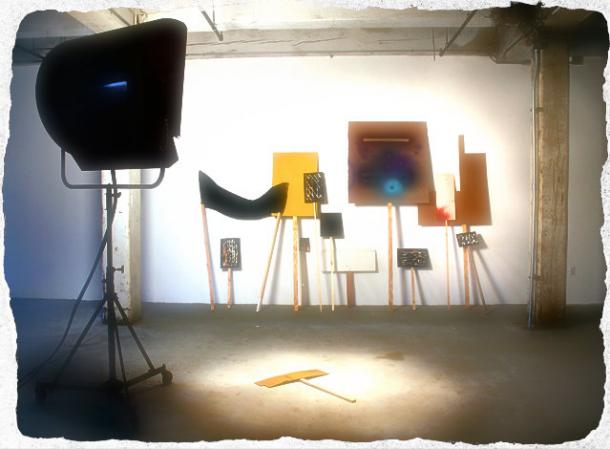
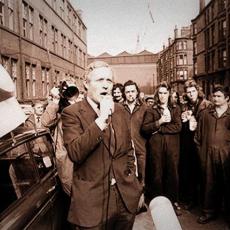
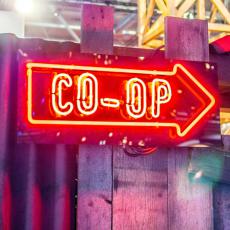
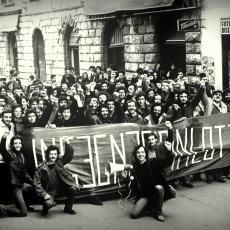
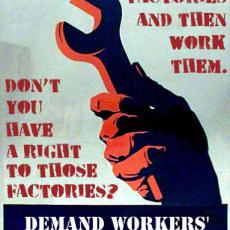
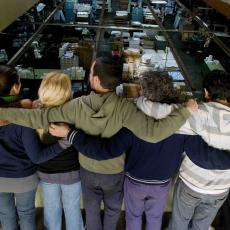
Comments
Post new comment